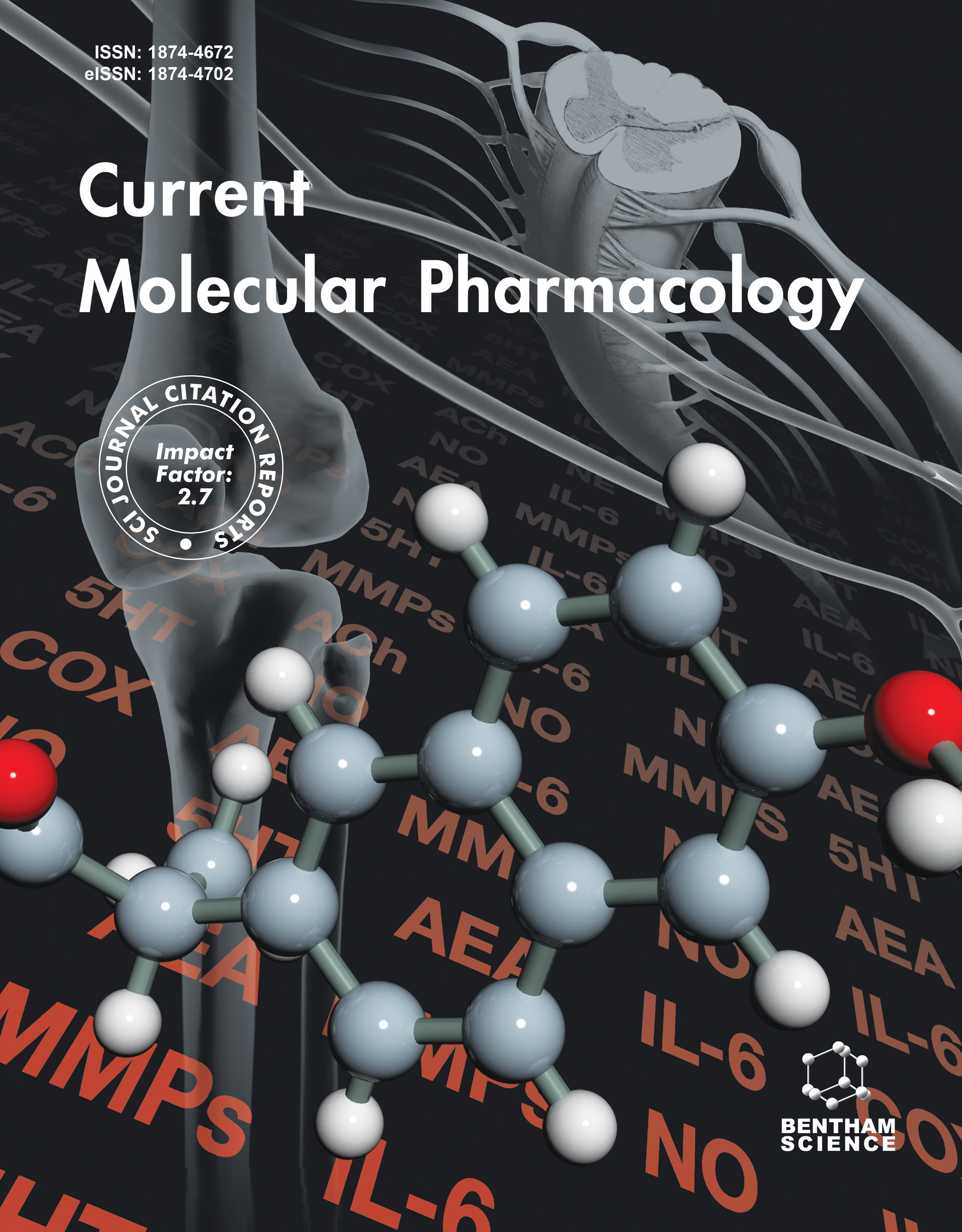- Home
- A-Z Publications
- Current Molecular Pharmacology
- Previous Issues
- Volume 15, Issue 6, 2022
Current Molecular Pharmacology - Volume 15, Issue 6, 2022
Volume 15, Issue 6, 2022
-
-
Polysaccharides to Combat Viruses (COVID-19) and Microbes: New updates
More LessAuthors: Manaf AlMatar, Essam A. Makky, Aizi N. M. Ramli, Nesibe E. Kafkas and Fatih KöksalCOVID-19, which is speedily distributed across the world and presents a significant challenge to public health, is caused by the severe acute respiratory syndrome coronavirus 2 (SARS-CoV-2). Following MERS coronavirus (MERS-CoV) and SARS, this is the third severe coronavirus outbreak in less than 20 years. To date, there are no exact agents and vaccines available for the treatment of COVID-19 that are clinically success Read More
-
-
-
BAPST. A Combo of Common Use Drugs as Metabolic Therapy for Cancer: A Theoretical Proposal
More LessCancer therapy advances have yet to impact global cancer mortality. One of the factors limiting mortality burden reduction is the high cost of cancer drugs. Cancer drug repurposing has already failed to meet expectations in terms of drug affordability. The three FDA-approved cancer drugs developed under repurposing: all-trans-retinoic acid, arsenic trioxide, and thalidomide do not differ in price from other drugs deve Read More
-
-
-
Pharmacotherapy for SARS-CoV-2 and Seizures for Drug Repurposing Presumed on Mechanistic Targets
More LessAuthors: Divya Goel, Ankit Srivastava, Ángel Aledo-Serrano, Anuja Krishnan and Divya VohoraThe currently circulating novel SARS-CoV-2 coronavirus disease (COVID-19) has brought the whole world to a standstill. Recent studies have deciphered the viral genome structure, epidemiology and are in the process of unveiling multiple mechanisms of pathogenesis. Apart from atypical pneumonia and lung disease manifestations, this disease has also been found to be associated with neurological symptoms, which inclu Read More
-
-
-
Potential Natural Compounds for the Prevention and Treatment of Nonalcoholic Fatty Liver Disease: A Review on Molecular Mechanisms
More LessAuthors: Cheng Ma, Cheng Wang, Yafang Zhang, Honglin Zhou and Yunxia LiNonalcoholic fatty liver disease (NAFLD) is a kind of metabolic stress-induced liver injury closely related to insulin resistance and genetic susceptibility, and there is no specific drug for its clinical treatment currently. In recent years, a large amount of literature has reported that many natural compounds extracted from traditional Chinese medicine (TCM) can improve NAFLD through various mechanisms. According to t Read More
-
-
-
Dapagliflozin Protects H9c2 Cells Against Injury Induced by Lipopolysaccharide via Suppression of CX3CL1/CX3CR1 Axis and NF-ΚB Activity
More LessBackground: Dapagliflozin, a selective Sodium-glucose cotransporter-2 (SGLT2) inhibitor, has been shown to play a key role in the control and management of metabolic and cardiac diseases. Objective: The current study aims to address the effects of dapagliflozin on the expression of fractalkine (FKN), known as CX3CL1, and its receptors CX3CR1, Nuclear factor-kappa B(NF-ΚB) p65 activity, Reactive oxygen species (RO Read More
-
-
-
Effect of Edaravone on MicroRNA Expression in Exosomes after Hepatic Ischemia-reperfusion Injury
More LessAuthors: Yanxia Fei, Jiali Shao, Ge Huang, Lijuan Wang, Shuangfa Zou, Huiping Sun, Chumei Zheng and Jinfeng YangBackground and Objective: Hepatic ischemia-reperfusion injury (HIRI) results in serious complications after liver resection and transplantation. Edaravone (ED) has a protective effect on IRI. This study was designed to evaluate whether ED could protect the liver of rats from HIRI injury and explored its exosomal miRNA-related mechanism. Methods: The sham group, hepatic ischemia/reperfusion (IR group), and hepatic ische Read More
-
-
-
Cytotoxic and Antitumoral Activity of N-(9H-purin-6-yl) Benzamide Derivatives and Related Water-soluble Prodrugs
More LessBackground: The development of small molecules as cancer treatments is still of both interest and importance. Objective: Having synthesized and identified the initial cytotoxic activity of a series of chemically related N-(9H-purin-6-yl) benzamide derivatives, we continued their evaluation on cancer cell models. We also synthesized water-soluble prodrugs of the main compound and performed in vivo experiments. Method: We Read More
-
Most Read This Month
Article
content/journals/cmp
Journal
10
5
false
en


